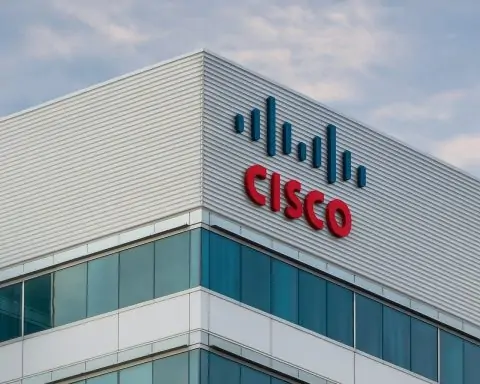- Sale Rumors Spark Rally: Confluent, Inc. stock jumped nearly 20% in pre-market trading on October 8, 2025 after a Reuters report revealed the company is exploring a potential sale following acquisition interest from tech companies and private equity [1]. The data streaming specialist has hired an investment bank to advise on the early-stage process, though no deal is guaranteed [2]. Shares surged to around $24.7 on the news [3], reflecting optimism that a buyout could fetch a premium.
- Recent Performance: Even after this spike, Confluent’s stock remains down about 25–26% year-to-date [4] [5]. It closed at $20.73 on Oct 7, 2025 [6] before the rumor-driven jump, and is now trading in the mid-$20s – roughly the midpoint of its 52-week range ($15.64 – $37.90) [7]. Over the past year the stock was roughly flat (+4% year-over-year before the rumor) [8], underperforming broader tech indices amid volatility.
- Analyst Sentiment & Targets: Wall Street analysts maintain a cautiously optimistic view. Wells Fargo recently initiated coverage with an “Overweight” rating and a $24 price target [9], seeing Confluent as the “standard for data streaming” and noting the vast resources required to build Kafka streams in-house [10]. Overall, the stock carries a Moderate Buy consensus, with ~30 analysts’ average 12-month target around $24–25 per share [11] [12] – implying mid-teens percentage upside from pre-rumor levels. (Notably, the rumor rally has already lifted CFLT near this target.)
- AI and Big Data Tailwinds: Confluent’s technology – built on Apache Kafka – enables organizations to stream and analyze real-time data, a capability that is increasingly critical for artificial intelligence (AI)applications [13]. The company’s founders created Kafka and have turned it into a cloud-native data streaming platform used for everything from banking transactions to IoT telemetry [14]. Surging corporate investment in AI has boosted demand for data infrastructure, positioning Confluent as a key player in the AI-driven big data ecosystem [15].
- Financial Snapshot: Confluent is growing briskly but is not yet GAAP-profitable. In Q2 2025, revenue grew about 20% year-over-year to $282 million [16] and non-GAAP earnings turned positive (EPS $0.09) [17], though on a trailing basis the company still posted a -$0.94 EPS loss [18]. Gross margins are strong (~74% [19]), but heavy investment leaves operating margins deeply negative (-37% [20]). At the current ~$7 billion market cap, Confluent trades around 6.5× trailing sales [21] – a premium valuation reflecting its growth potential. The balance sheet is healthy (nearly 4× current ratio) [22], but insiders have only ~1% ownership and have been net sellers in recent months [23] [24], signaling some caution.
- Competition and Industry Context: Confluent operates in a competitive landscape of cloud data streaming and real-time analytics. It competes with open-source Kafka deployments (for companies that DIY) and cloud vendors’ native services (like AWS Kinesis), but its enterprise-grade platform offers ease of use, robust tooling, and support that many in-house teams can’t easily replicate. Wells Fargo analysts believe concerns about Kafka’s open-source competition are “overblown” given the complexity and resources needed to build similar capabilities internally [25]. The rush to capitalize on AI has also led to industry consolidation – for example, Salesforce agreed in 2025 to acquire data integrator Informatica for ~$8 billion [26]. Confluent’s rumored sale interest fits this trend of larger firms snapping up data infrastructure players to bolster AI offerings [27] [28].
Latest News and Developments
Confluent’s headquarters in Silicon Valley. The company’s rumored sale exploration has made headlines, spurring a surge in its stock price as investors speculate on a potential acquisition.
The biggest recent news for Confluent came on October 8, 2025, when a Reuters exclusive reported that the company is exploring a sale after receiving takeover interest [29]. According to the report, multiple private equity firms and tech companies approached Confluent, prompting it to work with an investment bank on a possible deal [30]. This development reflects how valuable real-time data streaming has become in the age of AI – Confluent’s technology is seen as a strategic asset for any larger firm looking to enhance its AI data pipeline [31]. The mere possibility of a buyout sent Confluent’s stock skyrocketing ~19% in early trading on Oct 8 [32] as investors priced in the chance of a premium offer.
The Reuters piece noted a couple of key points behind the takeover interest. First, Confluent’s valuation had been under pressure in 2025 (shares were down ~26% YTD prior to the news) [33]. In fact, the stock dropped about 33% in July after Confluent lost a major AI-focused customer [34]. That sharp mid-year plunge – Confluent’s share price fell from the high-$20s to around $18 during the summer slump – made the company a more attractive target for acquirers [35]. Would-be buyers likely see an opportunity to scoop up a real-time data leader at a relative discount, especially given how critical streaming data has become for AI development. The Reuters report also emphasized a broader consolidation trend: big companies are racing to acquire data management and infrastructure firms to strengthen their AI capabilities [36]. Confluent could be part of that wave, though the company cautioned that there’s no guarantee of a deal and it may remain independent [37] [38].
Aside from the takeover rumor, Confluent had other notable developments in early October 2025. The company announced a headline-grabbing partnership in the world of Formula 1 racing: a multi-year deal with the Visa Cash App Racing Bulls F1 team to provide real-time data streaming for race strategy [39]. This partnership, unveiled at the start of October, will see Confluent’s platform streaming live telemetry and engineering data to help the racing team make split-second decisions. It’s a flashy example of Confluent’s tech being applied beyond traditional IT – bringing real-time data advantages to sports and entertainment. While this F1 partnership didn’t dramatically move the stock, it showcases Confluent’s expanding use cases and was featured in the company’s marketing (dubbed “Milliseconds of Advantage”) [40].
Additionally, Confluent is gearing up for its next financial report. The company confirmed it will release third quarter 2025 earnings on October 27, 2025 [41]. Investors will be watching that report closely for updates on Confluent’s growth trajectory and any commentary on the potential sale rumors. The Q3 earnings call could provide more insight into how Confluent’s management views the takeover interest and the company’s standalone plan if it remains independent. In the meantime, the Oct 8 news has been the dominant story, with Confluent suddenly in the spotlight as a possible tech M&A prize.
Stock Price and Recent Performance
Confluent’s stock has seen a rollercoaster 2025, and the latest spike only partly recoups earlier losses. Prior to the sale-rumor rally, CFLT was down about 26% year-to-date [42], making it one of many mid-cap tech names that struggled amid rising interest rates and a market rotation out of high-growth software stocks. The shares began 2025 around the high-$20s but hit turbulence mid-year – most dramatically when Confluent disclosed the loss of a large customer in July, which sent the stock tumbling by one-third in a single swoop [43]. By late summer, CFLT traded as low as $15.64 (its 52-week floor) [44], reflecting investors’ growth and profitability concerns.
From those lows, Confluent mounted a partial recovery even before the takeover news. In early October 2025, the stock was hovering near ~$20, helped by a general improvement in tech sentiment and some encouraging analyst coverage (more on that below). As of the close on October 7, 2025, Confluent was at $20.73 [45] per share. Then came the Reuters bombshell: on Oct 8, CFLT leapt to roughly $24–25 in early trading [46], its highest level in several months. The pre-market price jumped as high as $24.77 (+19.5%) on the initial headline [47]. During regular trading hours, the stock fluctuated around the mid-$24 range – a dramatic one-day pop, although still well below its peak for the year.
Zooming out, at current levels (mid-$20s), Confluent’s stock is roughly in the middle of its range from the past year. In the last 12 months CFLT traded as high as $37.90 and as low as ~$15.6 [48]. The high came in late 2024/early 2025 when enthusiasm for AI-related tech was running hot, while the low coincided with the summer 2025 pullback and company-specific bad news. Even after the recent rebound, Confluent is still down about 45% from that 52-week high. In other words, early investors and those who bought the highs remain underwater, but the stock has made significant strides off its bottom. Year-over-year, Confluent is approximately flat to slightly positive (+4% vs 12 months ago) [49], underperforming broad tech benchmarks like the Nasdaq.
In terms of market capitalization, Confluent’s roughly $24 share price translates to about a $7.2 billion market cap [50]. That valuation is up from around $6 billion at the depths of its summer sell-off, but down from ~$10+ billion at its peak. Trading volume spiked on the rumor news – more than seven million shares changed hands by mid-day, well above the average ~7.1M daily volume [51], indicating heavy interest from traders. Retail investor sentiment also swung sharply bullish on the news: on Stocktwits (a social investing forum), the mood for CFLT jumped from “bullish” to “extremely bullish” on Oct 8 [52], with message volume surging as speculators discussed buyout scenarios.
It’s worth noting that Confluent’s stock had already begun to re-rate upward in late September even before the M&A chatter. This was aided by a positive analyst initiation from Wells Fargo on Sept 30 and generally improving risk appetite in tech. In fact, on Sept 30 the stock rallied about 4%, and in the first week of October it rose roughly 6% as some investors anticipated strong AI-fueled demand for its services [53]. The Oct 8 spike, however, was an order of magnitude larger – essentially catapulting the stock near the consensus analyst price target in one go. For existing shareholders, it’s a welcome turnaround from a tough year. For prospective investors, the key question is whether this rally is sustainable (either through a buyout or improving fundamentals) or if the stock might slip back if no acquisition materializes.
Analyst Views and Stock Forecasts
Professional analysts have been divided but generally optimistic about Confluent’s long-term prospects, even as the stock slumped earlier in 2025. In fact, just a week before the takeover news, Wells Fargo initiated coverage on CFLT with a bullish stance. In a report on Oct 1, Wells Fargo gave Confluent an “Overweight” rating and a $24 price target [54]. At the time, that target implied roughly 30% upside from the then-prevailing price around $19 [55]. Wells Fargo’s thesis was that Confluent is emerging as the standard platform for data streaming, benefiting from a first-mover advantage in commercializing Apache Kafka [56]. The analyst acknowledged that some investors worry about competition from open-source Kafka (i.e. companies using Kafka on their own without paying Confluent). However, Wells Fargo argued these concerns are overblown, given “the vast amount of resources”required to build and maintain Kafka streams internally [57]. In their view, many enterprises will opt to use Confluent’s managed solutions rather than reinvent the wheel. The note also highlighted Confluent’s growing roster of high-value customers (those spending over $1M annually) and the company’s path toward $1 billion in annual recurring revenue (ARR) as evidence of its traction in the market [58].
Sell-side sentiment overall has leaned positive. According to TipRanks data, Confluent has a “Moderate Buy” consensus rating, based on 21 Buy recommendations, 7 Holds, and 2 Sells in the last few months [59]. Price targets from these analysts vary widely – from lows around $20 to highs in the $40s – but the average target is about $24 to $25 per share [60] [61]. That average target represented roughly 18% upside from the low-$20s before the Reuters news [62]. Now, with the stock trading near $24, Wall Street’s target implies that Confluent is fairly valued unless new information (like a confirmed buyout or stronger earnings) spurs target upgrades. In fact, some analysts may revise their forecasts if they believe a takeover could happen at a higher price – speculative chatter among traders has floated a possible $30 buyout price, which would be ~45% above Confluent’s $20.73 closing price before the rumor [63]. However, it’s important to note that $30 figure is purely conjecture from market chatter, not an official valuation.
Not all analysts are fully bullish. The presence of a few Hold and Sell ratings indicates that some experts have reservations. Bears point to Confluent’s ongoing losses and competition. For instance, prior to the sale news, Morgan Stanley had reportedly rated Confluent “Equal-Weight” (neutral), and some others worry that growth could slow as the company saturates more of the Kafka user base. But overall, even cautious analysts acknowledge Confluent’s leadership in a burgeoning niche. As of early October, 28 out of 30 analysts tracked by one source rated CFLT a Buy or Hold [64].
It’s also telling to see which major investors have been buying or selling the stock. Confluent has attracted notable institutional investors, including growth-focused funds. Filings show strong institutional ownership (over 75% of the float) [65]. For example, Point72 Asset Management (hedge fund run by Steve Cohen) dramatically increased its stake in Confluent earlier in the year [66], and other institutions like Altimeter and Champlain Investment Partners also hold multi-million-share positions [67]. On the flip side, J.P. Morgan’s asset management arm cut its stake by more than half in recent quarters [68], perhaps reflecting some profit-taking or reallocation. Meanwhile, Confluent’s insiders (executives and directors) have been selling modest amounts of stock on net, with 10 insider sale transactions and no buys in the past three months [69]. Such insider selling, combined with negative earnings, gave a cautious signal to some analysts even before the M&A rumors.
Looking ahead, stock forecasts for Confluent will hinge on two scenarios: (1) the company remains independent and must deliver improving financial results to justify upside, or (2) it gets acquired at a premium. In the first scenario, analysts will focus on Confluent’s upcoming earnings (Q3 and Q4) and 2026 guidance. If the company can sustain ~20%+ growth and show a clear path toward profitability, many believe the stock could trade higher over the long term – some bullish commentators have even suggested Confluent could be a “10x opportunity” in the coming years if real-time data becomes as ubiquitous as databases [70]. In the second scenario (a buyout), short-term stock forecasts become moot; instead, the question is at what price a deal might occur. For now, most official analyst targets cluster in the mid-$20s, signaling that at least on a standalone basis, Confluent’s current mid-$20s price is in line with expectations. Any upside from here will likely require either strong earnings beats or credible acquisition offers.
Fundamental and Financial Analysis
From a fundamental perspective, Confluent is a classic high-growth, still-unprofitable tech company – showing strong top-line expansion and gross margins, but with significant operating losses as it reinvests for growth. The company’s financials highlight both the opportunities and challenges in its business model.
Revenue Growth: Confluent’s revenues have been climbing at a healthy pace. Over the last three years, revenue grew at a CAGR of ~13.3% [71] (which includes a pandemic-era slowdown). More recently, growth has accelerated: in FY2024, revenue was $585 million (up 34% YoY), and in the first half of 2025 growth remained around ~20%. In Q2 2025, Confluent posted $282.3 million in revenue, a 20% increase year-over-year [72], slightly above analyst expectations [73]. Within that, Confluent Cloud (the cloud-hosted service) was the star, growing 28% YoY [74] as more customers opted for the fully managed streaming platform. Subscription revenue (which includes cloud and on-prem software licenses) made up the bulk at $271 million [75]. The strong revenue performance shows that demand for Confluent’s real-time data solutions is still rising, albeit at a moderated rate compared to the hyper-growth of prior years.
Profitability and Margins: While revenue grows, Confluent is inching toward profitability but isn’t there yet on a GAAP basis. Gross margins are very high – around 74% [76] in recent reports – typical for a software/SaaS company with high fixed costs but low marginal costs. This indicates a potentially lucrative business once scale is achieved. The challenge is on the operating expense side: Confluent has been spending aggressively on R&D, sales, and marketing to capture market share. As a result, its operating margin is about -37% [77] (negative), meaning it spends $1.37 for every $1 of revenue. In Q2 2025, Confluent did report a small positive non-GAAP operating margin (~6%) [78]after adjusting for stock-based comp and other items, and even a positive free cash flow of $11 million [79]. But on a GAAP basis, net losses persist – trailing twelve-month EPS is -$0.94 [80]. The trend is improving, however: a year ago GAAP EPS was around -$1.30, so losses have narrowed. Management has indicated they are balancing growth with a path to break-even; indeed, non-GAAP EPS of $0.09 in Q2 beat expectations [81], showing that excluding certain costs, the business can be run near break-even. Still, it will likely be another year or more until Confluent might achieve full GAAP profitability, especially if they continue investing in expansion.
One bright spot is that Confluent’s operating efficiency is improving as revenue scales. For example, the company’s non-GAAP operating margin improved by ~5.7 percentage points year-over-year in Q2 [82], and adjusted operating income swung from roughly $1 million a year ago to $17.8 million in Q2 2025 [83]. This indicates that Confluent is starting to get leverage in its model – revenue is growing faster than expenses now, after a period of heavy investment. The company’s target (as mentioned in earnings calls) is to eventually reach the typical SaaS model of 20%+ operating margins long-term, but they are not guiding to that in the immediate term. In the meantime, stock-based compensation remains a significant expense (as is common with tech firms), which is something analysts watch when assessing true profitability.
Cash and Balance Sheet: Confluent’s balance sheet appears solid. The company has a current ratio of ~4.0 [84], meaning current assets (like cash and receivables) are 4× current liabilities – a strong liquidity position. Cash and short-term investments were roughly $2 billion as of mid-2025 after the company raised money in its 2021 IPO and a follow-on offering, so there is no immediate risk of a cash crunch. Debt-to-equity stands around 1.04 [85], which includes convertible debt; this level of leverage is moderate and not alarming for a growth company. An Altman Z-score of 2.14 [86] puts Confluent in a gray zone for financial stress (not in danger of bankruptcy, but not ultra-safe like a mature profitable firm). However, given its cash reserves and improving cash flow, Confluent’s financial health is generally considered fine for now. If anything, the main financial risk is if growth stalls and the company continues to burn cash for many years – but at present, it looks on track to fund its operations internally.
Valuation Metrics: Before the recent spike, Confluent’s valuation had come down significantly from its frothy 2021-2022 levels. At around $24 per share, Confluent trades at roughly 6.5 times trailing 12-month sales [87]. That Price-to-Sales (P/S) ratio of 6.5× is still relatively high compared to the broader market, but for context, high-growth enterprise software peers often trade anywhere from 5× to 10× sales. During the peak of AI stock euphoria, Confluent’s P/S was much higher (into the teens). The current multiple suggests that investors are pricing in continued growth but also accounting for the company’s losses. In terms of Price-to-Book, CFLT is around 6.7× book value [88], reflecting the intangible value of its software IP and customer base (software companies often trade well above book value).
Another way to gauge valuation is by looking at the analyst price targets and DCF-type models. As noted, the average price target is ~$24.9 [89], very close to the trading price now. Some valuation models (e.g. SimplyWall.St or others) might estimate a fair value in the mid-$20s based on future cash flows assuming ~20% growth and improving margins. If an acquirer were to step in, they might be willing to pay a premium – perhaps valuing Confluent more on strategic merit than on current earnings. For instance, Salesforce paying $8B for Informatica implies ~8× sales for that data company [90]; an equivalent multiple on Confluent’s ~$700M annual run-rate revenue would point to a takeout value around $5.5–6B (below current market cap, meaning Confluent is already valued a bit higher). But given Confluent’s stronger growth profile, bidders might justify a higher price. These are rough comparables; ultimately, Confluent’s worth will depend on its growth trajectory in streaming data, which many expect to accelerate with the proliferation of AI and real-time analytics.
Key Metrics: Investors often watch a few operational metrics for Confluent. One is customer count, especially high-spend customers. In Q2, Confluent reported 1,439 customers with over $100k in ARR, up 10% YoY [91]. The number of $1M+ ARR customers is also growing nicely (Wells Fargo cited that as evidence of enterprise adoption [92]). Another metric is cloud vs on-prem mix: Confluent’s Confluent Cloud revenue (28% growth) is growing faster than its self-managed software, which is positive since cloud revenue tends to be more recurring and sticky. Also, net retention rate (how much existing customers expand usage) is important – Confluent’s has been over 130% historically, meaning current customers significantly expand their spending year to year. However, management noted that some large customers moderated their consumption in mid-2025 (likely that big AI customer that left skewed this). Ensuring healthy retention and expansion in the cloud era is crucial for fundamentals.
In summary, Confluent’s fundamentals show a company with strong growth and gross margins, a large market opportunity (streaming data for AI and beyond), but also ongoing losses and hefty valuation multiples. The financial trajectory is improving (losses narrowing), but the stock’s valuation leaves somewhat limited room for error. That dynamic – high growth potential vs. high expectations – is a core part of the investment case and likely a factor in why Confluent might consider a sale now, before any significant slowdown can occur. Investors will be evaluating Q3 and Q4 results to see if Confluent can keep scaling efficiently or if growth is leveling off post-pandemic.
Technical Analysis and Trading Trends
From a technical analysis standpoint, Confluent’s stock has made an impressive comeback from its mid-year lows, but it’s not yet in a clearly established long-term uptrend. Momentum indicators turned positive in recent weeks. For instance, Benzinga’s short-term trading outlook shifted to “upward movement” for CFLT in early October [93] as the stock started posting higher lows and higher highs on the chart. The recent rally pushed Confluent above some key levels – likely climbing back above its 50-day moving average in late September, and approaching the 200-day moving average (if not slightly above it after the Oct 8 jump). These moves can attract technical traders who look for trend reversals.
The Relative Strength Index (RSI) for Confluent is now around 57 (on a 14-day RSI) [94], which is in the middle of the range and neither overbought nor oversold. An RSI above 70 would indicate overbought conditions, so CFLT doesn’t flash that yet – suggesting the stock’s recent gains have been strong but not extreme relative to its typical trading pattern. This could imply there’s room for further upside momentum if positive news continues, without immediate technical selling pressure. On the other hand, if the stock were to pull back, technicians might look at support levels around $20 (the pre-rumor price and roughly where the 50-day average might lie) and then around $16 (the area of the 2025 lows).
Trading volume is another important factor. As mentioned, volume spiked dramatically on the takeover rumor – a sign of a potential “volume breakout”. When price and volume jump together, it often indicates conviction behind a move. However, volume-driven spikes on news can sometimes fade if the news doesn’t evolve. Traders will be watching if CFLT can hold above key price levels in the days following the rumor. If the stock quickly falls back below, say, $22 on low volume, it might fill the gap and re-enter its prior trading range. If instead it consolidates in the mid-20s with steady volume, that could establish a new base for the next leg up (or for another jump if an actual acquisition offer emerges).
Confluent has also shown itself to be a volatile stock overall. GuruFocus notes that CFLT’s one-year volatility (standard deviation of returns) is about 57% and its beta is 0.74 [95]. The beta below 1.0 is interesting – it suggests Confluent has not been highly correlated with broader market moves (it’s less sensitive to the S&P’s movements, possibly because it often moves more on company-specific news). The high volatility indicates large swings are common – both positive and negative. This aligns with the stock’s history: large rallies during tech bull moments and steep drops during selloffs. Traders should be prepared for this volatility; stop-losses or hedging strategies might be prudent for risk management.
From a chart perspective, resistance levels to watch could include the recent high near $25 – if the stock pushes past that, the next significant resistance might be around $30 (which coincidentally is the speculated buyout price by some). Above $30, there’s not much obvious resistance until the high-$30s from late 2024. Conversely, support looks firm at the psychological $20 level, and stronger down around $16-$18 where the stock bottomed out and where value buyers stepped in over the summer.
In summary, the technical outlook for Confluent has improved substantially in the short term: momentum is up, the downtrend from early 2025 has been broken, and the heavy volume on the latest rally indicates genuine interest. However, until more clarity on fundamentals or a buyout comes, the stock may chop around as traders digest the new range. The neutral RSI and presence of both bullish and bearish catalysts (M&A hopes vs. execution risks) suggest that consolidation is possible in the near term. Technical analysts will be watching whether Confluent can hold its recent gains and perhaps form a new uptrend – or if it slips back, indicating that the October jump was a one-off reaction. As of now, the bias has shifted to cautiously bullish on the technical front, with the caveat that news flow (earnings, M&A) can quickly override chart patterns in a stock like this.
Industry and Market Context
Confluent sits at the crossroads of several powerful trends in technology: real-time data streaming, the rise of big data analytics, and the explosive growth of AI applications. Its fortunes are closely tied to how these trends play out and how well the company positions itself amid competition.
The core problem Confluent addresses is the need for enterprises to handle data in motion – not just static data at rest in databases. This need has grown exponentially in recent years. Companies increasingly require instant insights from streaming events: think of fraud detection systems scanning transactions in real time, or IoT sensors in a factory sending continuous feedback, or an e-commerce site personalizing recommendations on the fly as a user browses. Apache Kafka, the open-source technology at the heart of Confluent, emerged out of LinkedIn about a decade ago precisely to meet this kind of demand. Kafka’s creators (three of whom founded Confluent) designed it to be a high-throughput, fault-tolerant publish/subscribe log for events – essentially a “data bus” for modern architectures. Confluent took Kafka and built a company around it, adding tools to make it easier to use, deploy, and integrate. In doing so, Confluent arguably pioneered the commercial data streaming market, similar to how Red Hat commercialized Linux in earlier times.
Competitive Positioning: In the data streaming realm, Confluent’s primary “competitor” is the do-it-yourself Kafka user. Thousands of companies use Kafka freely without paying Confluent, which is possible because Kafka is an Apache open-source project. Confluent’s challenge and opportunity is to convert a portion of those Kafka users into Confluent customers by offering superior value – such as fully managed cloud service (Confluent Cloud), enterprise security and monitoring features, and expert support. Wells Fargo’s analysis suggests many enterprises prefer paying Confluent rather than devoting engineering teams to run Kafka themselves [96], which is a positive sign for market adoption.
Apart from Kafka itself, there are other streaming and data pipeline technologies. Amazon Web Services offers Kinesis, a streaming data service that can be seen as a competitor. Cloud providers also offer managed Kafka (Amazon MSK, Azure Event Hubs for Kafka, etc.), essentially competing versions of Confluent’s idea. However, Confluent often highlights that its cloud service is multi-cloud (works across AWS, Azure, GCP) and that it has a neutral platform advantage over cloud-specific tools. There are also newer startups like Redpanda (which built a Kafka-compatible streaming platform in C++) and Flink (for stream processing – though Confluent actually offers Apache Flink as part of its platform [97]). Additionally, traditional data management firms like Cloudera or new cloud data warehouses (Snowflake, etc.) might encroach on streaming use-cases at the edges. But in terms of pure focus on data in motion, Confluent is widely regarded as a leader.
Market Growth: The overall data streaming market is expanding as part of the broader big data and analytics sector. With the advent of AI, especially generative AI, companies are realizing that feeding AI models with real-time data can unlock new capabilities. This has been a tailwind for Confluent – Reuters noted that the corporate race for AI has fueled interest in data infrastructure companies like Confluent [98]. For instance, an AI-powered customer support bot is far more useful if it has up-to-the-second information on customer interactions, which requires streaming integration. Every industry from finance to telecommunications is now investing in real-time data pipelines, and Confluent, as a “picks and shovels” provider for that, stands to benefit.
However, this increased importance also means big competitors may want in. The mention of consolidation is key: large tech players (think FAANG companies or big enterprise software firms) might find it easier to buy a proven data streaming platform than build their own. Salesforce’s agreement to acquire Informatica for $8B in 2025 [99] is a case in point – though Informatica is more about data integration/ETL and governance, it shows big software companies are willing to make multi-billion-dollar bets to strengthen their data and AI toolsets. One could imagine a cloud provider, or an enterprise software giant, or even a large AI-focused firm, eyeing Confluent for similar reasons. This backdrop provides strategic rationale for why Confluent became a takeover target in the first place [100].
Another context point: The stock market in 2025 has been somewhat bifurcated. AI-related companies soared in the first half of the year, but by mid-year there was a shakeout where investors started differentiating between immediate AI winners (like GPU makers) and those with more medium-term roles (like data infrastructure). Confluent, falling into the latter category, saw its stock lag initially. Yet, as the “AI gold rush” continues, secondary plays like data streaming are coming back into focus. Industry experts often point out that for every flashy AI model, there’s an unsung need for plumbing (data pipelines) behind it. Confluent’s narrative fits that: it’s not building AI models, but it’s providing the real-time data plumbing that makes AI applications feasible at scale [101].
In the cloud computing landscape, Confluent’s strategy has been to integrate and partner where possible. It has partnerships with all major cloud vendors (offering Confluent Cloud through their marketplaces) and has emphasized hybrid-cloud flexibility. This is important because many enterprises adopt multi-cloud approaches, and Confluent can act as a unifying data layer across different environments. The company’s F1 racing partnership even hints at edge computing possibilities, where streaming isn’t just in data centers but also at the edge (race tracks, factories, etc.). The expansion of use-cases will be critical for Confluent to stay ahead of commoditization.
Finally, consider the open-source dynamic. Apache Kafka remains free and widely used; Confluent’s challenge is to keep its proprietary offerings far enough ahead in value. They continuously contribute to Kafka (keeping goodwill in the community) while also developing extras like ksqlDB (for querying streams), Stream Governance tools, and recently Stream Designer (a low-code interface for building streaming pipelines). By broadening its platform, Confluent aims to be not just a “Kafka vendor” but a comprehensive streaming data platform. This could widen its moat against both open-source purists and one-trick competitors.
In essence, Confluent operates in a fast-evolving sector where data, cloud, and AI converge. The industry context is largely favorable – real-time streaming is expected to be a foundational component of modern software stacks. But the company must execute well to fend off giants and justify its valuation. Whether it does so independently or as part of a larger entity will depend on how the next chapter of this industry shakeout unfolds.
Investment Outlook and Conclusion
Confluent’s stock story in 2025 encapsulates the tension between short-term catalysts and long-term fundamentals. In the short term, the tantalizing prospect of a buyout has injected significant excitement. Traders see the possibility that Confluent could be taken private or absorbed by a larger tech firm at a premium, which could deliver quick gains from current prices. Indeed, the stock’s ~20% surge on Oct 8 reflects speculation that a bidder might pay more than the market was previously willing to for CFLT shares. If credible news of an acquisition emerges (for example, a confirmed approach or an outright offer), the stock could rally further toward the rumored price levels (some peg ~$30 as a conceivable takeout price) [102]. Conversely, if weeks pass with no further M&A developments, some of the takeover premium might fade and the stock could retrace part of its jump.
For long-term investors, the investment outlook hinges on Confluent’s ability to continue growing and eventually turn profitable in a competitive field. On that front, there are reasons for optimism. The company has a clear lead in a niche that’s increasingly mission-critical for enterprises. Its growth, while off the hyper-growth rates of its early days, remains robust – 20%+ annual revenue expansion with a sizable recurring revenue base is nothing to scoff at. The fact that Confluent’s software is deeply tied into customers’ data pipelines gives it a degree of stickiness; once a big bank or telecom standardizes on Confluent for streaming, they are unlikely to rip it out easily. This suggests good long-term retention and expansion dynamics, supporting a potential path to the coveted “Rule of 40” (growth + profit margin) metric that successful SaaS companies aim for. Confluent isn’t there yet, but its improving margins and steady expansion indicate it’s moving in the right direction.
Valuation remains a consideration. At ~6–7× sales and over 60× forward earnings (based on the small non-GAAP profit expected), Confluent is priced for continued growth. Should growth unexpectedly stall – for instance, if competition intensifies or if enterprise IT spending weakens – the stock could face multiple compression. Investors will watch metrics like customer additions, cloud revenue growth, and remaining performance obligations (RPO/backlog) for any signs of slowing momentum. On the flip side, if the company surprises to the upside (say, reaccelerating cloud growth to >30% or demonstrating a quicker path to $1B+ revenue and 20% margins), the current valuation would look justified or even cheap in hindsight.
One wildcard is the macro environment. High-growth tech stocks like Confluent often move with changes in interest rates and risk appetite. In 2025, as interest rates rose, we saw pressure on unprofitable tech shares (hence CFLT’s early-year decline). If inflation and rates stabilize or fall, growth stocks could regain favor, benefiting Confluent. Additionally, any big AI-driven spending cycle could lift all boats in the data infrastructure pond.
Investors should also keep an eye on upcoming catalysts beyond a potential acquisition. The Q3 2025 earnings release on Oct 27, 2025 will be an immediate catalyst [103]. Management’s commentary on that call will be scrutinized for any hints about strategic alternatives (they might demur, but analysts will likely ask about the Reuters report). The numbers themselves – e.g., if Confluent beats guidance or raises its full-year outlook – could reinforce confidence in the standalone value of the company. Additionally, any new major customer wins or partnerships (similar to the F1 team deal, or perhaps industry-specific cloud deals) could be positive for sentiment.
In conclusion, Confluent, Inc. (CFLT) finds itself at an inflection point. The company has proven the importance of real-time data streaming and carved out a strong position in that arena, but the stock’s journey has been volatile as the market gauges how lucrative that position will ultimately be. The recent takeover rumor has put a spotlight on Confluent, suggesting that others see significant value in its platform even if the public markets have been lukewarm of late. For investors, the stock now presents a blend of scenarios: a potential M&A windfall, or a longer road of executing as an independent growth company. The good news is that Confluent’s fundamentals are improving – it’s growing at a healthy clip and inching toward profitability – and the secular trends of AI and big data provide tailwinds. The challenge is justifying its valuation and warding off competition long enough to scale into a profitable, dominant player (if it doesn’t get acquired first).
For a public audience considering Confluent, it’s clear that this stock carries both opportunity and risk. In the near term, headlines and rumors may drive swings. In the long run, Confluent’s value will be determined by how essential real-time data streaming becomes to businesses – and by the company’s ability to monetize that trend. As of October 2025, the narrative is exciting: Confluent is at center stage, its stock is rebounding, and many are asking if this real-time data pioneer will indeed become a takeover target or continue its journey solo. Investors should stay tuned, as the coming weeks (and the Q3 earnings call) could provide more plot twists in the Confluent story.
Sources: Recent news from Reuters [104] [105]; stock analysis from Stocktwits [106] [107]and Benzinga [108] [109]; financial data via Nasdaq/Benzinga (Q2 results) [110] and GuruFocus [111] [112]; analyst insights from TipRanks [113]; and Confluent press releases [114]. All information is up to date as of October 8, 2025.
References
1. www.reuters.com, 2. www.reuters.com, 3. www.benzinga.com, 4. www.reuters.com, 5. www.benzinga.com, 6. www.benzinga.com, 7. www.benzinga.com, 8. www.benzinga.com, 9. stocktwits.com, 10. stocktwits.com, 11. www.tipranks.com, 12. www.gurufocus.com, 13. stocktwits.com, 14. www.reuters.com, 15. www.reuters.com, 16. www.nasdaq.com, 17. www.nasdaq.com, 18. www.gurufocus.com, 19. www.gurufocus.com, 20. www.gurufocus.com, 21. www.gurufocus.com, 22. www.gurufocus.com, 23. www.gurufocus.com, 24. www.gurufocus.com, 25. stocktwits.com, 26. www.reuters.com, 27. www.reuters.com, 28. www.tipranks.com, 29. www.reuters.com, 30. www.reuters.com, 31. www.reuters.com, 32. stocktwits.com, 33. www.reuters.com, 34. www.gurufocus.com, 35. www.gurufocus.com, 36. www.reuters.com, 37. www.investing.com, 38. www.investing.com, 39. stocktwits.com, 40. stocktwits.com, 41. investors.confluent.io, 42. www.reuters.com, 43. www.gurufocus.com, 44. www.benzinga.com, 45. www.benzinga.com, 46. www.benzinga.com, 47. www.inkl.com, 48. www.benzinga.com, 49. www.benzinga.com, 50. stocktwits.com, 51. www.benzinga.com, 52. stocktwits.com, 53. simplywall.st, 54. stocktwits.com, 55. www.nasdaq.com, 56. stocktwits.com, 57. stocktwits.com, 58. stocktwits.com, 59. www.tipranks.com, 60. www.tipranks.com, 61. www.nasdaq.com, 62. www.tipranks.com, 63. stocktwits.com, 64. www.tipranks.com, 65. www.gurufocus.com, 66. www.nasdaq.com, 67. www.nasdaq.com, 68. www.nasdaq.com, 69. www.gurufocus.com, 70. stocktwits.com, 71. www.gurufocus.com, 72. www.nasdaq.com, 73. www.nasdaq.com, 74. www.nasdaq.com, 75. investors.confluent.io, 76. www.gurufocus.com, 77. www.gurufocus.com, 78. www.nasdaq.com, 79. www.nasdaq.com, 80. www.gurufocus.com, 81. www.nasdaq.com, 82. www.nasdaq.com, 83. www.nasdaq.com, 84. www.gurufocus.com, 85. www.gurufocus.com, 86. www.gurufocus.com, 87. www.gurufocus.com, 88. www.gurufocus.com, 89. www.gurufocus.com, 90. www.reuters.com, 91. www.tradingview.com, 92. stocktwits.com, 93. www.benzinga.com, 94. www.gurufocus.com, 95. www.gurufocus.com, 96. stocktwits.com, 97. www.nasdaq.com, 98. www.reuters.com, 99. www.reuters.com, 100. www.reuters.com, 101. www.reuters.com, 102. stocktwits.com, 103. investors.confluent.io, 104. www.reuters.com, 105. www.reuters.com, 106. stocktwits.com, 107. stocktwits.com, 108. www.benzinga.com, 109. www.benzinga.com, 110. www.nasdaq.com, 111. www.gurufocus.com, 112. www.gurufocus.com, 113. www.tipranks.com, 114. investors.confluent.io







